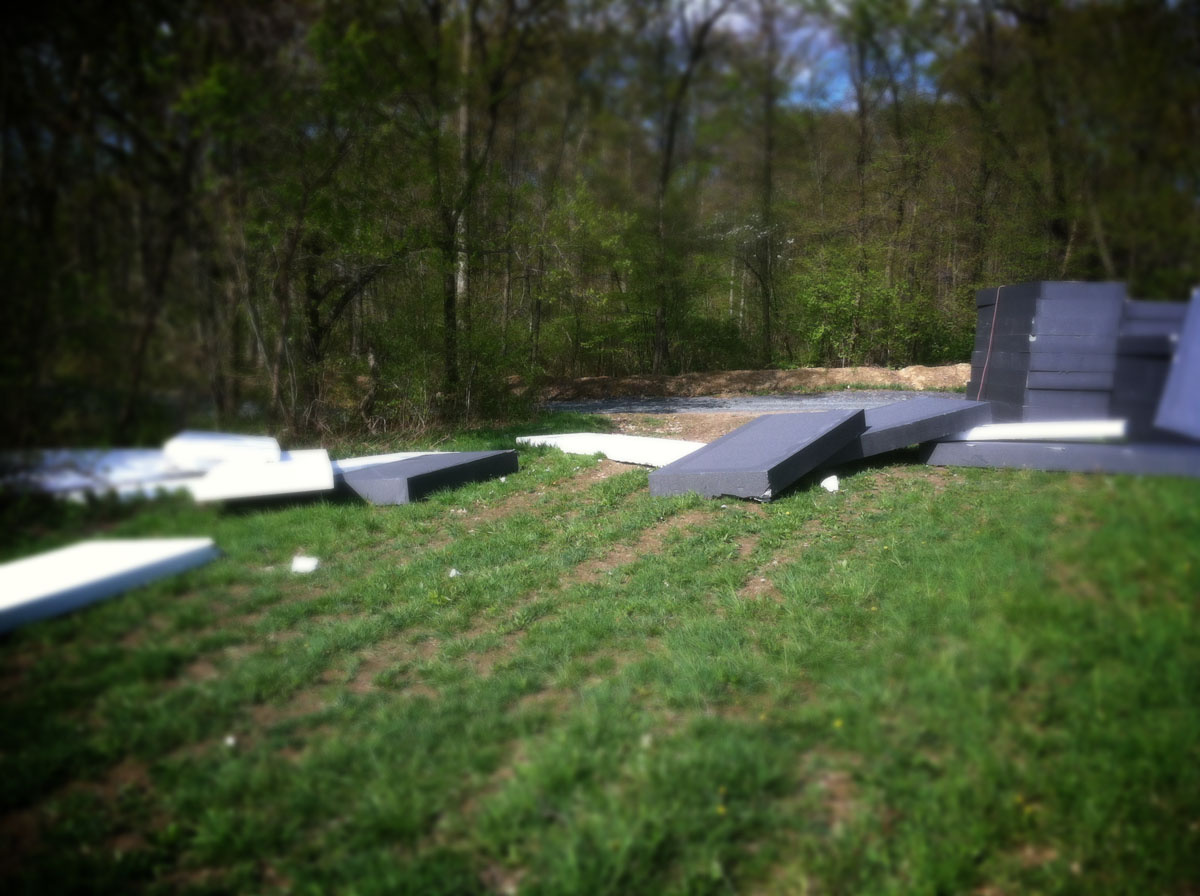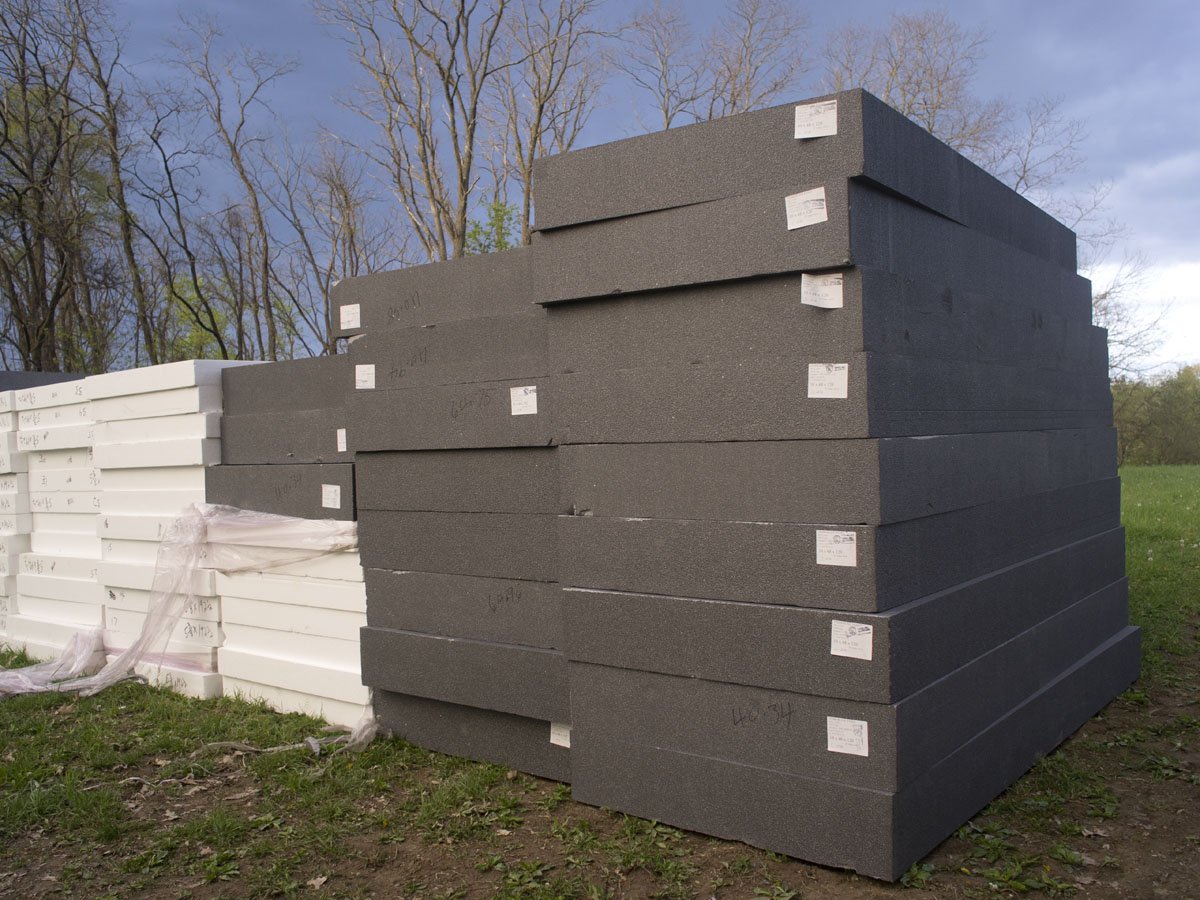 Strong winds overnight blew our neatly stacked EPS foam all over the field.
Strong winds overnight blew our neatly stacked EPS foam all over the field.

 The blocks are 10 inches thick by 14 feet long. After the foundation is sealed, the blocks will be attached to the outside of the wall from the footing up to the sill. This will complete the outside layer of insulation that completely separates the foundation from the surrounding soil. Blocks will also go under the slab. The white foam is EPS. The darker blocks are Neopor from BASF, a graphite-enhanced EPS with higher R-value.
The blocks are 10 inches thick by 14 feet long. After the foundation is sealed, the blocks will be attached to the outside of the wall from the footing up to the sill. This will complete the outside layer of insulation that completely separates the foundation from the surrounding soil. Blocks will also go under the slab. The white foam is EPS. The darker blocks are Neopor from BASF, a graphite-enhanced EPS with higher R-value.
We are renting an old house. No heat. No hot water. The stairs creak and the air smells musty as we descend into the furnace room. Chris opens a cracked green door, shines a flashlight into the blackness and reaches up to pull a string cord. In the glare of a bare bulb we stand and regard The Beast in the Basement. It is silent. It has consumed a tank of oil in less than four summer months: 250 gallons at a cost of $1,099 when filled last June. It is Sunday night and the kids need to clean up before school, so we pile into the car and drive to their grandparents’ house for hot showers – pajamas in hand.
In the morning, I meet Walt, the oil guy, who feeds the beast and hands me a bill for $923. “You could throw a cat through the gap around those windows,” he tells me, talking about how to use less oil this winter. First frost is due any day and we are motivated to winterize. Meanwhile, one of the best building scientists in the country is studying the plans for our Passive House, the super-snug, oil-free opposite of this rambling old rental.
Six enormous windows will open our house to the sun. It will be heated by passive solar gain from windows and glass doors, along with heat from people and the everyday use of electrical appliances.
We explain this concept at a recent dinner party. A skeptical guest asks, “No furnace? What happens when it hits zero outside?” Suggestions for how to generate heat are offered around the table: invite the neighbors over, get a big dog, make the kids do jumping jacks. The skeptical guest claps his hands above his head in a modified jack and jokes, “Can I stop now, Mommy, can I stop now?” We are taking some heat.
Here in the Hudson Valley, heating bills can be high. In our last house, the heat source roared beneath the floor boards, puffing fumes and making the iron radiators clank and groan. Oil deliveries excited the children, who liked to watch a man in navy coveralls drag a hose from his truck to our fill pipe. Oil bills excited Mommy and Daddy, adding up to nearly $5,000 a year for a 1,600 sq ft house. The new house, 2,800 sq ft, should cost less than $400 a year to heat. The dinner guests are impressed.
Estimates for super-insulated windows are coming in now. The brands we are exploring include Serious Windows, Thermotech, Inline and Intus.